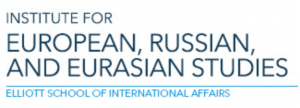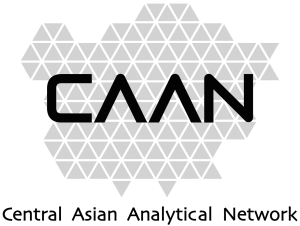Starting in the early eleventh century, poets, historians, rulers, jurors, and even writers across Central Asia left behind a remarkable wealth of rare books and manuscripts containing a variety of information on history, geography, medicine, mathematics, philosophy, Islam, etc. Until recently, most of these manuscripts were written in Persian, which served as the lingua franca of the region for many centuries.
Those of the handwritten books from the Middle Ages that have been preserved to this day are breathtaking to see. Often bound in luxurious covers, their yellow pages showcase exquisite calligraphy, permanent ink, and the spirit of sage. While the governments of Central Asian countries seek to collect these manuscripts into their respective national libraries, many remain in the hands of private collectors around the world.
One such rare find is a seventeenth-century book allegedly belonging to Yalangtush Bahadur, a military ruler of Samarkand who, due to his unclear origins, is claimed by both Uzbeks and Kazakhs. Yalangtush Bahadur quite literally engraved his name in Central Asian history: the Persian-language inscription he left on the walls of Sherdor Madrasa in Samarkand declares “the emir-commander, the just Yalangtush Bahadur” to have been its founder.
In this interview, Anwar Victorin, a Kazakh-born antiques collector based in the US, discusses this book—which now belongs to him—and other rare finds.

How did you start collecting Central Asian artifacts? What is so special about Islamic manuscripts for you personally and for Central Asians in general, given that most inhabitants of the region do not speak Arabic or Persian and therefore cannot read the contents of these manuscripts?
My background is in finance, which I studied at Georgetown University, and I am mainly involved in a different business that is my specialty, but what drew me to collecting rarities and artifacts is the rich and largely unknown history that hides behind each item.
I also often wonder why more people in Central Asian countries, where the predominant religion is Islam, do not express such enthusiasm about sacred and holy items as their counterparts of other faiths. For example, many Orthodox Christians have in their homes icons symbolizing their faith, but how many Kazakh homes have a Quran? I believe it to be a very small percentage.
And yes, you are correct in saying that most people in Central Asia do not speak Arabic or Persian (except, of course, for those in Tajikistan). But maybe it is precisely this enigma—of old pages written in an unknown but seemingly sacred script—that draws our people to rare manuscripts. Our history is still being written and discovered; these manuscripts are truthful evidence of their epoch and serve as a living testament to our people’s culture.
Tell us about your collection. What is your most prized item and why?
My collection is quite extensive, and I am not able to speak about it fully because it has not been catalogued in its entirety. I do not currently have either the time or the financial resources to properly research all items in the collection. Therefore, I can only speak on some items which are known:
I have a seventeenth-century painting by the Dutch marinist Ludolf Backhuysen. Interesting facts about it are that it once belonged to Tsar Peter the Great and that it is over 2 meters in length. As far as I am aware, there are only a few other such monumental paintings by Backhuysen, and they are in the Louvre in Paris and the Rijksmuseum in Amsterdam. Another famous painting of his is displayed in the National Gallery of Art here in Washington, DC. Whenever his paintings show up at international auctions such as Sotheby’s and Christie’s, they always sell for quite high sums.

There is also an artifact from the thirteenth-century Mamluk era that belonged to Sultan Beybars. It is special because there are very few world-class heroes in Kazakhstan history. Beybars was one such figure and is recognized worldwide for his achievements.
In the past, I acquired another special item that was purchased through me and subsequently donated to the Kazakh National Museum. But I can’t disclose details of it because an NDA agreement was signed.
The most recently confirmed artifact is a seventeenth-century Islamic manuscript (written in Persian) that belonged to Yalangtush (Zhalantos) Bahadur. We only know limited details about it. Based on the experts’ analysis, the manuscript dates back more than 400 years. It bears the royal mark of Imam Quli Khan of Bukhara, which means it came from his library, and there is also script hailing Zhalantos Bahadur. Most likely, this manuscript was a gift from Imam Quli Khan to Zhalantos Bahadur for his achievements and service to the Khan. This manuscript was part of a large collection of manuscripts from a manuscript library collected and owned by the renowned Ottoman calligrapher Mustafa Izzet in the nineteenth century. The Ottomans had the world’s most extensive libraries and collected manuscripts from all corners of the globe.


This is a very rare manuscript, as most rare books in Kazakhstan, for example, belong to a much later period. As appraised by scientific experts, “the manuscript presented is an undoubted historical relic and is of considerable value.” In fact, it is not easy to establish a commercial appraisal for an item of this level, as such items are unique and never identical. But we can look at recent sales of relics of this level at Christie’s and Sotheby’s World Auction Houses to give us an idea of value. For example, this month, Georgians bought a manuscript at Christie’s auction that was estimated at $1.25 to $2 million and donated it to their National Museum. In 2019, a Quran from the Mamluk era sold for more than $4 million at Christie’s auction. And the interesting part is that the ultimate buyer was not one of Islamic background. Which shows that Western buyers can beat the competition if collectors from Islamic countries are slow to react. Every nation collects and preserves its national dignity and one can evaluate the manuscript of Yalangtush Bahadur in comparative figures.
Who was Yalangtush and why is he important?
When we started cataloguing one of the first batches of this large collection, the historians confirmed that one of the manuscripts was this significant artifact. Previously, I recognized the name but was not very familiar with the history behind Yalangtush Bahadur. I recently found out that Uzbekistan was making a new feature movie about him. I also learned that Yalangtush was a very learned ruler: he studied Persian at school and all the legal documents drawn up on his behalf, including the inscription on one of the madrasas on Registan Square, are written in Persian.
I have attempted to contact cultural and historic organizations of Kazakhstan regarding this manuscript. But I don’t quite understand why Zhalantos Bahadur, who was allegedly ethnically Kazakh and a direct relative of Aiteke Bi, is not of as much interest to Kazakhstan as to Uzbekistan.

Yalangtush Bahadur (1578-1656) was a governor of Samarkand from 1626 and a major representative of the military-owning nobility during the Ashtarkhanid era. He belonged to the Olchin tribe of Uzbeks and was brought up under the Bukhara Khan Abdulla Khan. This genealogy is somewhat contested, however: Khalel Dosmukhamedov, a Kazakh scholar and a member of the early-twentieth-century Alash Orda movement, claimed in his article “Genealogy of Zhalantus Bahadur (Yalangtush-Bahadur), Builder of the Tillya-Kara and Shir-Dor Madrasas in the City of Samarkand,” published in Tashkent in 1928, that Yalangtush belonged to a Kazakh tribe. According to Kazakh oral legend, the name of his father was Seyitkul, but according to written legal documents, his father’s name was Baikhoja.
Yalangtush made a military career of protecting the Bukhara Emirate from the northern nomadic tribes, in particular the Kazakh khans. Historian, orientalist, and academician of the Academy of Sciences of the Turkmen SSR M. Masson wrote: “Yalangtush-biy Bahadur, the son of Boykhoja from the Uzbek clan of Alchin, was a typical representative of the Uzbek military-feudal aristocracy.”
Yalangtush Bahadur was remarkable not only for his military and administrative talents, but also for his support of large architectural projects, including the construction of the Sherdor Madrasa, Tillakori Madrasa, Makhdumi Azam Mosque, and others in Samarkand.

In red ink are the names—the first one is Imam Quli Khan and the second is Yalangtush Bahadur. The Khan’s name was in red ink to signify his importance; the fact that he ordered the scribe to write Yalangtush’s name in red ink as well shows that Imam Quli considered Yalangtush to be his equal.
“On the back of the last page there is an almond-shaped impression of owner’s seal with the legend ‘Imam Quli Bahadur-khan,’ without a date. This indicates that the manuscript belonged to the library of the Ashtarkhanid khan Imam Quli (1582-1644), who ruled in Bukhara in 1611-1642. The seal overlaps a laudatory verse inscription in honor of the virtues of the just ‘Imam Quli Khan and Emir of Samarkand Yalangtush Bahadur’ with the date 1021 Hijra (1612-13). Yalangtush Bahadur (1578-1656) was distinguished by his military talent and ability as an organizer, and for his assistance to the Ashtarkhanids he received the title of Emir, as is mentioned in the inscription.”
How customary was it for Central Asian rulers like Yalangtush to have their own libraries? Do you know what happened to these libraries and the books they contained?
The answer to this question is still not entirely clear to me, and I’m still searching for understanding and knowledge. I often receive invitations from all over the world to see different manuscripts and items, which I hope will provide me with further answers.
Given your large network of dealers and collectors, how would you assess the current interest of the global community in Central Asian or Kazakh rarities? Where can we find most of these rarities—in museums or private collections?
Overall, there is significant interest in ancient manuscripts, including those of Arabic and Islamic origin, among collectors and dealers. However, to my disappointment, I have not seen as much international interest in Central Asian artifacts, specifically, as I believe they deserve. But it is little wonder that the international community lacks interest in this subject, given that Central Asian governments themselves do not express sufficient interest in culture and history. I know this from personal experience: I have tried on several occasions to get in touch with people about this topic, but it is a painstaking and slow process, which makes no sense. Do we already have so many of these rare artifacts?
Also, when speaking with the business elites of Kazakhstan, I was very surprised to find that Kazakh collectors are not eager to acquire paintings by our national artists. I realize that such artwork may not be considered to be on the same level as Western art, but I believe that the important thing is that it is ours and represents our culture.

Shamshir belonging to Shah Shujah Durrani (1785-1842), ruler of the Afghan (Durrani) Empire and Father of Afghanistan. It was made in 1809 in Afghanistan. Signed by Mulah Sadik Isfahani (d. 1887), a renowned calligrapher whose shamshirs, manuscripts, decorations, and hollowware are displayed in museums in Iran, India, Afghanistan, Uzbekistan, and Russia.
What do you consider to be your mission in your current art-collecting activity?
Honestly, my main motive as an American entrepreneur is business. But nevertheless, if the history of our nation is enriched with the help of my involvement, I will be very proud of this and it will be something that I can share with my children and grandchildren.














